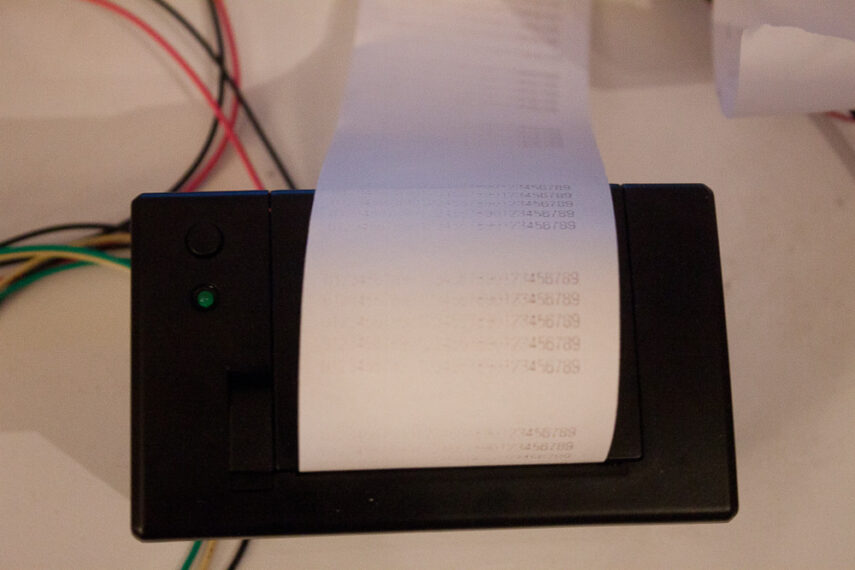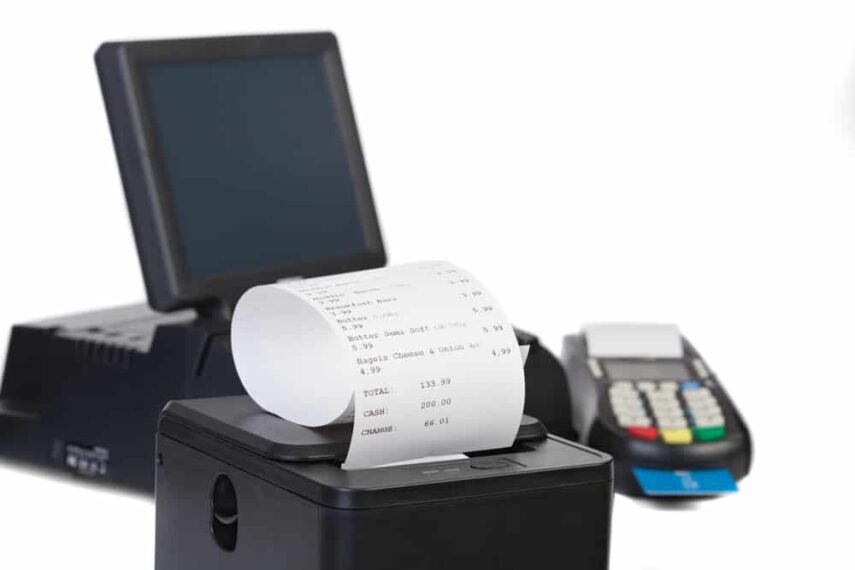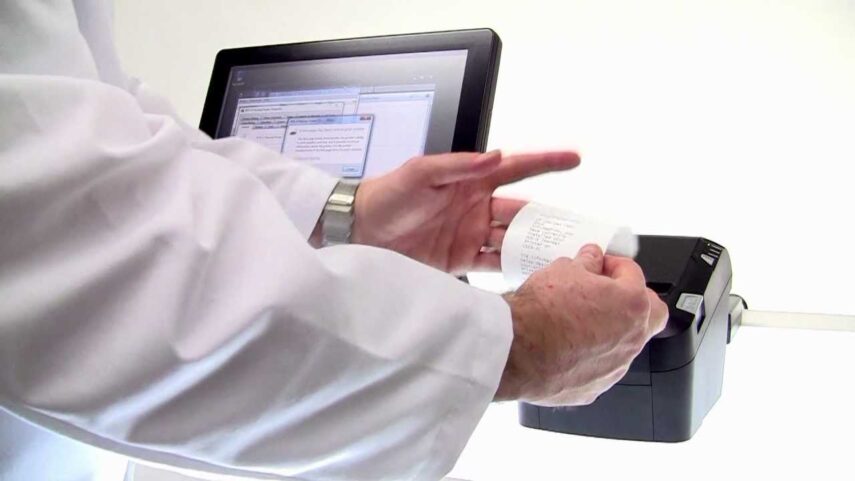In today’s fast-paced and modern world, technology is becoming increasingly vital for businesses of all sizes. Although many industries are transitioning towards a paperless environment, thermal receipt printers are still essential for many businesses, including retail shops, restaurants, and various other industries. Thermal receipt printers are widely used to print receipts, invoices, and bills for customers. They offer several benefits, such as cost-effectiveness, speed, and efficiency, making them a popular choice in the market. However, it is highly important to find a reliable and fast receipt printing solution for your business needs. If you are interested, you can find more information on pos.munbyn.com.
What is a Thermal Receipt Printer?

Thermal receipt printers are a type of printer that uses heat to produce printed text or images on heat-sensitive paper rolls. The printer uses a thermal head to heat the paper, which then turns black in areas where it is heated. Thermal receipt printers are used in various industries, including retail, hospitality, healthcare, and transportation, to print receipts, invoices, and tickets. The technology behind thermal receipt printers has evolved significantly over the years, resulting in more advanced and efficient printers.
Types of Thermal Receipt Printers
There are two types of thermal receipt printers: direct thermal printers and thermal transfer printers. Direct thermal printers use heat to activate the chemical coating on the paper, while thermal transfer printers use a ribbon to transfer ink onto the paper. These printers are more cost-effective and easier to use, while thermal transfer printers produce higher-quality prints. Thermal transfer printers are typically used for printing barcodes and labels.
Features of Thermal Receipt Printers
Thermal receipt printers come with various features, including printing speed, print resolution, connectivity options, paper width, and cutting options. The printing speed of thermal receipt printers ranges from 50 to 350 millimeters per second. Print resolution ranges from 203 to 600 dots per inch (dpi). Connectivity options include USB, Ethernet, Wi-Fi, and Bluetooth. Paper width ranges from 58 to 80 millimeters while cutting options include auto-cutter and manual cutter. Additionally, some thermal receipt printers come with extra features, such as built-in scanners and card readers.
Benefits of Thermal Receipt Printers

Thermal receipt printers offer several benefits, including speed, cost-effectiveness, and low maintenance. These printers are much faster than dot matrix printers and produce high-quality prints. They are also more cost-effective as they do not require ink or toner cartridges. Thermal receipt printers are low maintenance as they have fewer moving parts and do not require regular maintenance. Also, thermal receipt printers produce less noise than other types of printers, making them an ideal choice for quiet environments.
Factors to Consider When Choosing a Thermal Receipt Printer
When choosing a thermal receipt printer, there are several factors to consider to ensure that you select the best option for your business needs. These include:
Print speed: The print speed of the printer is an important factor to consider, especially if your business has high printing volume requirements. Thermal receipt printers vary in print speed, with some printers capable of printing several dozen receipts per minute. It is important to choose a printer with a fast print speed to minimize waiting times and ensure efficient operations.
Connectivity options: The connectivity options available with a printer can have a significant impact on its versatility and functionality. For instance, a printer with USB and Ethernet connectivity options can be used with a variety of devices, including computers, tablets, and POS systems. Additionally, wireless connectivity options, such as Wi-Fi and Bluetooth, can provide greater flexibility in placement and allow for mobile printing capabilities.
Paper size compatibility: The size of the paper that the printer can accommodate is another important consideration. Some thermal receipt printers are designed for a specific paper size, while others can accommodate a range of paper sizes. It is essential to choose a printer that can accommodate the paper size required for your business needs.
Durability: The durability of the printer is also an important factor to consider, especially if it will be used in a harsh environment or subjected to frequent use. Look for printers that are made of sturdy materials and have a robust build quality. Besides, consider the warranty provided by the manufacturer to ensure that the printer is covered for any defects or issues.
Resolution: The resolution of the printer refers to the clarity and detail of the printed image. Higher resolution results in sharper and more detailed prints. It is important to choose a printer with a high resolution if you need to print high-quality images, barcodes, or other graphics.
Ease of use: The ease of use of the printer is another important factor to consider, especially if you have employees who will be operating the printer. Look for printers with intuitive interfaces and easy-to-use controls. You should consider printers that come with software that simplifies the printing process, such as drivers that automatically adjust printer settings based on the paper type and size.
Cost: The cost of the printer is an essential consideration, especially if you are operating on a tight budget. Thermal receipt printers vary in price, with some budget-friendly options available. However, it is essential to choose a printer that offers the required features and capabilities while also providing good value for money.
How to Install a Thermal Receipt Printer

Installing a thermal receipt printer is a simple process. First, you need to connect the printer to your computer or POS system using the appropriate cable, such as USB or Ethernet. Once the printer is connected, you will need to install the printer driver software on your computer or POS system. The driver software can typically be downloaded from the printer manufacturer’s website. After installing the driver software, you can test the printer by printing a test page or receipt.
Maintenance Tips for Thermal Receipt Printers
Thermal receipt printers require minimal maintenance compared to other types of printers. However, there are still some maintenance tips to keep in mind to ensure your printer’s longevity and performance. These tips include keeping the printer clean by regularly wiping it down with a soft cloth, using high-quality paper rolls to prevent paper jams and ensure high-quality prints, and regularly checking the printer’s settings and firmware updates.
Common Issues with Thermal Receipt Printers
Although thermal receipt printers are reliable and low maintenance, they can still experience some common issues. These issues include paper jams, connectivity issues, and print quality issues. Paper jams can be caused by using low-quality paper rolls or not properly aligning the paper. Connectivity issues can be caused by a faulty cable or incorrect network settings. Print quality issues can be caused by a dirty thermal head or incorrect print settings. These issues can typically be resolved by following the printer’s troubleshooting guide or contacting the manufacturer’s customer support.







